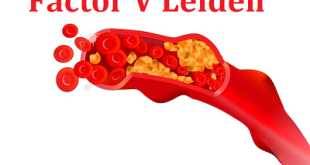Definition
Fibroadenoma is not cancerous. They range in size from smaller than a marble to as large as a golf ball. Most appear suddenly and stay the same size. Some shrink or continue to grow. They are affected by hormones and often change size over the menstrual cycle or during pregnancy.
Fibroadenoma is usually rubbery and firm, but they can be difficult to feel properly. If you push on the lump, you will probably find that it moves away from beneath your fingers. This is why some people call a fibroadenoma a ‘breast mouse’. Fibroadenoma do not move far within the breast.
Usually, fibroadenoma is not painful. However, they can be uncomfortable or very sensitive to touch. Often women find that their fibroadenoma gets tender in the days before their period. Pushing or prodding at the lump can also make it tender.
Epidemiology
They usually occur in women between the ages of 10 and 40 years. It is the most common breast mass in the adolescent and young adult population. Their peak incidence is between 25 and 40 years. Incidence decreases after 40 years.
Types
Simple fibroadenoma
Most fibroadenomas are about 1–3cm in size and are called simple fibroadenomas. When looked at under a microscope, simple fibroadenomas will look the same all over. Simple fibroadenomas don’t increase the risk of developing breast cancer in the future.
Complex fibroadenoma
Some fibroadenomas are called complex fibroadenomas. When these are looked at under a microscope, some of the cells have different features. Having a complex fibroadenoma can very slightly increase the risk of developing breast cancer in the future.
Juvenile fibroadenomas
This is the most common type of breast lump found in girls and adolescents between the ages of 10 and 18. These fibroadenomas can grow large, but most shrink over time, and some disappear.
Giant fibroadenomas
These can grow to larger than 2 inches (5 centimeters). They might need to be removed because they can press on or replace other breast tissue.
Phyllodes tumor
Although usually benign, some phyllodes tumors can become cancerous (malignant). Doctors usually recommend that these be removed.
Risk factors
Common risk factors of Fibroadenoma of the Breast include:
- Estrogen therapy or other hormone therapies
- Pregnancy
- Breastfeeding
- Use of birth control pills
It is important to note that having a risk factor does not mean that one will get the condition. A risk factor increases one’s chances of getting a condition compared to an individual without the risk factors. Some risk factors are more important than others.
Also, not having a risk factor does not mean that an individual will not get the condition. It is always important to discuss the effect of risk factors with your healthcare provider.
Causes of Fibroadenoma
The exact cause of Fibroadenoma of Breast is unknown. Though common associated factors are-
Hormones: Especially Estrogen seems to play a significant role in both growth and maintenance of these benign tumors.
Oral Contraceptive pills (OCP): These are the medicines, basically female hormone combinations which prevents ovulation thereby prevents pregnancy. OCP can also cause Fibroadenoma of the breast.
HRT (Hormonal Replacement Therapy) given in some cases of menopause due to excessive menopausal symptoms can cause fibroadenoma of the breast due to estrogen hormone.
Symptoms
Following are the alarming symptoms of fibroadenoma of the breast:
- Lump under the breast skin usually felt by fingers on touching
- Firm mass
- Rubber like or marble like consistency
- Easily movable within the breasts
- Has well-defined edges & smooth shape in most cases
- They do not cause pain usually but it depends on the location of growth
Every woman’s breast is influenced by Estrogen but not all get Fibroadenomas which shows that mere removal of fibroadenoma is not sufficient, but holistic treatment like Homeopathy is required.
Complications of Fibroadenoma
Most fibroadenomas don’t affect your risk of breast cancer. However, your breast cancer risk might increase slightly if you have a complex fibroadenoma or a phyllodes tumor.
Diagnosis and test
Diagnosis is based on the ‘triple test’. The triple test is:
The clinical assessment: A fibroadenoma usually feels very mobile but is firm. It can be freely moved over the muscle and can be moved under the skin. It is not usually painful but may be slightly tender if it is pushed hard.
The imaging of the lump: Ultrasound of the breast is often better than mammography in young women as the breasts are denser so are not able to be compressed as easily as in older women. The appearance of a fibroadenoma on ultrasound is that of a solid lump with a regular outline. A mammogram may show a dense mass that is smooth in outline.
Assessment of the cells or tissue: There is a typical appearance of a fibroadenoma under the microscope.
If all of the tests above suggest that the lump is a fibroadenoma and not cancer, then it is likely to be that. If even one of the tests suggests that it is a cancerous lump then the lump should be removed.
Treatment
Treatment for fibroadenomas may not be necessary unless they are large, painful or cosmetically undesirable, in which case they can be removed. Fibroadenomas do not grow back after they are removed; however, some women develop new fibroadenomas after having previous lumps removed.
The following treatment possibilities are available:
Watchful Waiting – Fibroadenomas may be left in place and monitored for growth. Women with multiple non-growing lumps may choose this tactic because removal would affect the shape of the breast.
Excision – Cutting out fibroadenomas with a scalpel, or traditional excision, is a treatment method used in some cases.
Percutaneous Excision – Sometimes fibroadenomas are removed by percutaneous (through the skin) excision. With this method, a small slit is made in the skin near the lump and an ultrasound-guided probe with a vacuum is used to extract the fibroadenoma in sections.
Cryoablation – Another treatment method used for some fibroadenomas is cryoablation, which destroys the lumps by freezing them without removing them. An ultrasound-guided probe is placed into the center of the lump through a small incision in the skin to perform the procedure.
Women with fibroadenomas may need to be followed regularly by their doctors through clinical breast exams and imaging tests such as mammograms (breast X-rays) or ultrasound if the lumps are left in place or if they have multiple or complex lumps that increase the risk for breast cancer.
Steps of cryoablation
Prevention of Fibroadenoma
- Fibroadenoma of the Breast is difficult to prevent because it is most likely caused by abnormal or fluctuating reproductive hormone levels
- Since prevention is generally not possible, it is important to be aware of the risk factors for breast lumps. The individual must also regularly conduct breast self-exams, to ensure that any lumps are not present
 Diseases Treatments Dictionary This is complete solution to read all diseases treatments Which covers Prevention, Causes, Symptoms, Medical Terms, Drugs, Prescription, Natural Remedies with cures and Treatments. Most of the common diseases were listed in names, split with categories.
Diseases Treatments Dictionary This is complete solution to read all diseases treatments Which covers Prevention, Causes, Symptoms, Medical Terms, Drugs, Prescription, Natural Remedies with cures and Treatments. Most of the common diseases were listed in names, split with categories.








Thank you.what about round ballon the skin around the breast movable but firm with small black opening.
please consult a doctor to get diagnosed.
ow can one examines herself
If you observe the symptoms given in the post. by these symptoms, one can examine themselves.
Thank a million.
what about the swolen hitching or scratching skin around the breast that have been they for year.
Please consult a doctor.
what about cancer pls
please see in the list of posts about cancer.
I had been having this symptoms each time my menses wants to come like a week before it but after that it will stop. pls is it normal
it seems like irregular menses please consult a gynecologist.
for three years now I have very painful breast but anytime visit the hospital the scan says normal but still fells the pain, what should i do?
If you are a feeding mother might be due to lactating. Or please consult a gynecologist as soon as possible.
I’m having this breast pain for over some months now,and there is a lump in it, please what should I do?
please consult a cardiologist.